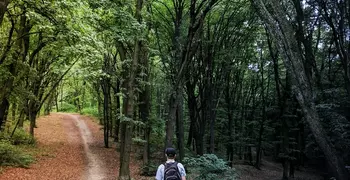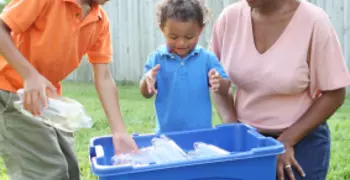Find Out More about Global Environmental Health
Course
The Center for Spirituality and Healing at the University of Minnesota offers a fully online course Food Choices: Healing the Earth, Healing Ourselves. Courses are open to current students at the University of Minnesota, students at other academic institutions, and lifelong learners in the community. For assistance with registrations, or for more information, please contact Erin Fider.
Websites
http://www.thenaturalstep.org/
https://www.epa.gov/learn-issues/learn-about-air
http://www.who.int/mediacentre/factsheets/fs266/en/index.html
http://www.who.int/mediacentre/factsheets/fs313/en/index.html
http://www.who.int/mediacentre/factsheets/fs350/en/
http://water.epa.gov/drink/contaminants/index.cfm
http://www.mayoclinic.com/health/vitamin-d/NS_patient-vitamind
Books and articles
Bowler, D. E., Buyung-Ali, L. M., Knight, T. M., & Pullin, A. S. (2010). A systematic review of evidence for the added benefits to health of exposure to natural environments. BMC Public Health, 10, 456.
Ewald, J. (2013). Carbon dioxide at NOAA's Mauna Loa Observatory reaches new milestone: Tops 400 ppm. National Oceanic and Atmospheric Administration. United States Department of Commerce. Retrieved from http://www.esrl.noaa.gov/news/2013/CO2400.html.
Gips, T. (2009). Sustainability. Online module, Center for Spirituality and Healing, Whole Systems Healing. Accessed at http://www.csh.umn.edu/education/focus-areas/whole-systems-healing/framing-concepts/sustainability.
Hengstler, J.G., Foth, H., Gebel, T., Kramer, P.J., Lilienblum, W., Schweinfurth, H., Völkel, W., Wollin, K.M., Gundert-Remy, U. (2011). Critical evaluation of key evidence on the human health hazards of exposure to bisphenol A. Critical Reviews in Toxicology;41(4), 263-91.
Karlin, W.A., Brondolo, E., Schwartz, J. (2003). Workplace social support and ambulatory cardiovascular activity in New York City traffic agents. Psychosomatic Medicine; 65(2):167-76.
Mayer, F. S., Frantz, C. M., Bruehlman-Senecal, E., & Dolliver, K. (2009). Why is nature beneficial? Environment and Behavior, 41(5), 607-643.
Mostafalou, S., Abdollahi, M. (2013). Pesticides and human chronic diseases: evidences, mechanisms, and perspectives. Toxicology and Applied Pharmacology; 268(2):157-77.
Nauert, R. (2012). Co-Worker Support Reduces Workplace Stress, Ups Productivity. Psych Central. Retrieved on May 13, 2013, from http://psychcentral.com/news/2012/02/07/co-worker-support-reduces-workplace-stress-ups-productivity/34537.html.
Pfeifer, M. (2013). Effects of vitamin D and calcium supplementation on heart rate and blood pressure in community-dwelling older individuals. Nutritional Influences on Bone Health, 343. doi: 10.1007/978-1-4471-2769-7_33.
Post, S.G. (2005). Altruism, happiness, and health: it's good to be good. International Journal of Behavioral Medicine; 12(2):66-77.
Poulin, M.J. (2013). Volunteering predicts health among those who value others: Two national studies. Health Psychology. Apr 8. [Epub ahead of print].
United Nations. (1987). Our common future. Report of the World Commission on Environment and Development. Retrieved from http://www.un-documents.net/wced-ocf.htm.


